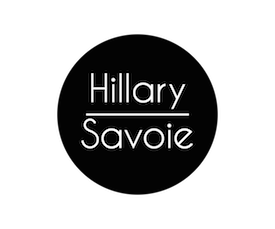My story “Around and Into The Unknown” is now available as an individual e-book as well as in a six-story paperback and e-book compilation, 6 of 1 Travel, released last week by Ponies + Horses Books.
The story is about our journey in trying to find a genetic diagnosis for Esmé. As many of you know, it has not been an easy path–and it is one that remains, in many respects, unresolved. Our experience with genetic testing is extreme, but within that experience there are lessons about the promises and limitations of genetic testing. Most importantly, our experience raises questions about what genetic mutations mean and how we choose to understand them.
Our search for answers about Esmé lead us to a knowledge of her that was right before our eyes, but all together unexpected.
*
Please enjoy the following excerpt from “Around and Into The Unknown”:
My husband and I sit in the examining room, my growing belly, exposed and covered in ultrasound jelly. We are giddy, excited to find out the sex of our first baby.
We are doe-eyed and naïve.
We are the people I can no longer stand to be around.
We have no reason to think that this day would be anything other than a celebration—another beautiful moment in our history of many beautiful moments together—a history that began eight years ago in one of those powerful flashes of chemistry and youth. Within weeks of kissing André for the first time in a bar in Montréal, I’d known we would get married and have children. Since the beginning I’d always had a clear vision of these children. The first would be our girl with André’s dark wavy hair and shining blue eyes. The second, our boy, would be blond haired and brown eyed, as I was as a little girl.
Here we are, about to find out if the first part of my vision will come true… will we be having the girl I am so desperately hoping for?
The ultrasound tech, who clearly loves her job, asks, “So I understand you want to know the sex of your baby, right?” She is barely able to hide her own excitement.
We nod eagerly, and wait while she double checks the screen with a practiced sense of drama.
“It’s a… baby girl!”
We are so occupied with our excitement—already discussing our favourite names—that it takes us a while to realize that the tech’s demeanour has dramatically shifted from a casual cheerfulness to a silent and intense focus.
Once we notice, André and I glance at each other, wondering what little thing might possibly be wrong. We watch as the tech systematically checks and rechecks the entirety of our baby. I see ten fingers, ten toes. I see a beating heart. I see a perfect profile, a brain that looks, well, like a brain. What, possibly could be the problem?
After some time the tech leaves abruptly with the words, “The doctor will be in soon.”
When the doctor arrives we have the first of many brushes with the cold efficiency that, surprisingly, still seems to be the mark of professionalism in some medical circles. Her stance toward us reminds me of cold metal against my skin. She works in complete silence, deliberately repeating the entire procedure.
André and I sit transfixed, again tracking fingers and toes, arms and legs, trying to understand what is terrifying this woman into her steely focus. When she is satisfied, she hands me a towel, nods at my exposed stomach, and says, simply, “Clean yourself up, get dressed and then I will speak to you in my office.”
*
While our daughter’s genes have been repeating her mutations over and over again for 20 weeks, this is the first hint we would be given. Here in the cold sterile office, not far from home, we are about to slip into a parallel universe where people are sorted by chromosomes, mutations and anomalies.
We are offered the practiced speech of an expressionless woman: “We have found several anomalies in your fetus.”
Our baby girl has suddenly become a “fetus” again, nameless, sexless, devoid of the personhood that rung out in the room just minutes before with the announcement: “It’s a girl!”
“This number of anomalies in a fetus at this stage typically indicates a major genetic syndrome. In this case, I would suspect Trisomy 13 or 18. Both of these disorders lead to severe disabilities and significantly reduced lifespans. Many of these children only live a few hours or a few days. It is also possible, but less likely, that she has Trisomy 21 or Down’s syndrome. Many people find that parenting a child with disabilities can be very rewarding. If you do not think you can care for such a child, there are options. Abortion is an option since you are 20 weeks pregnant. There are also adoption options for children with such conditions.”
I feel as if I have just woken up from a dream and found myself in the wrong life. I keep expecting the doctor to say, “Oh dear, I am so sorry, I have the wrong file here. Your baby? I brought you in to tell you she was the cutest fetus I have ever seen! That’s all. On your way out please send in those other poor souls in the hallway to hear this awful news.”
Because, how could we be talking about this perfect person I am growing inside me?
I have plans for her. This was not in them.

